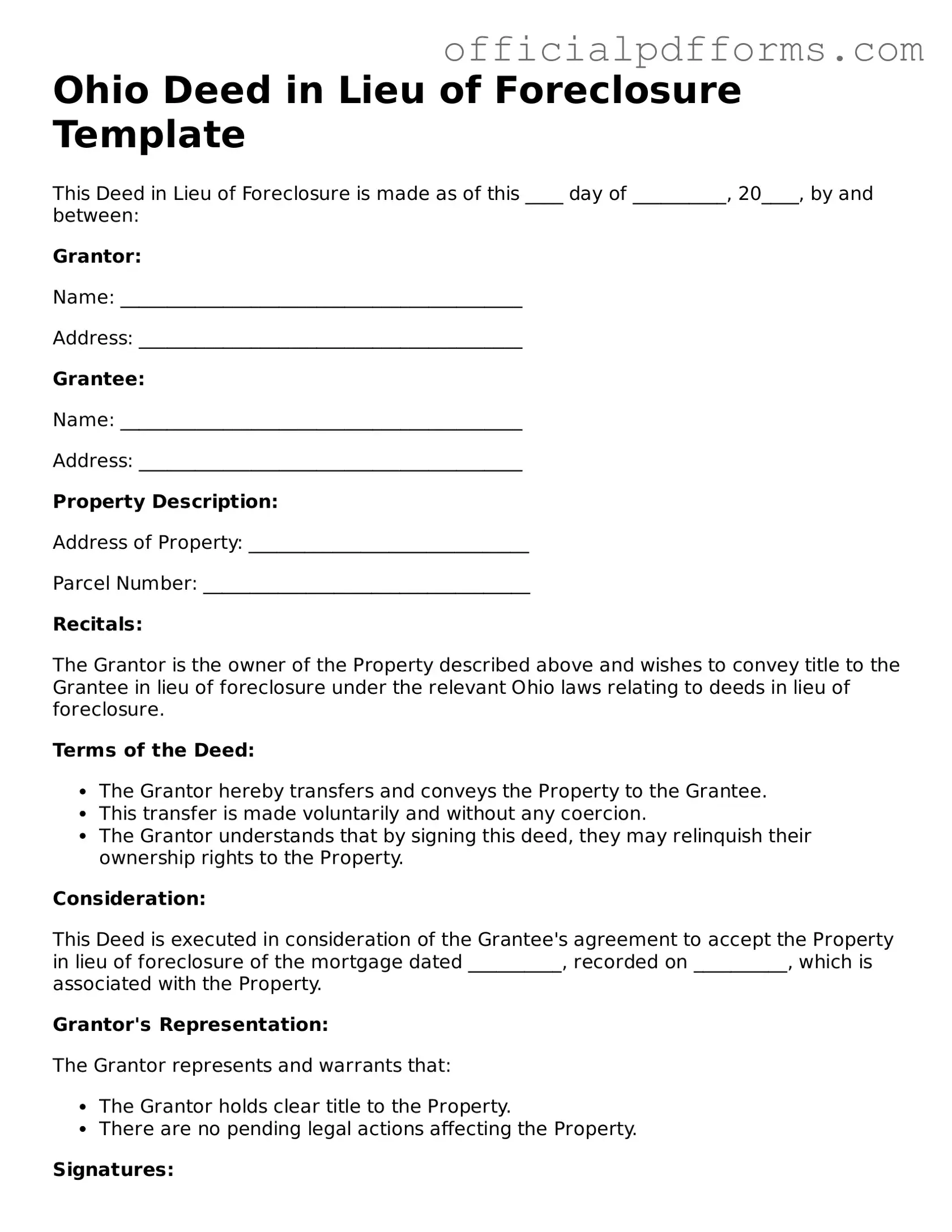Printable Ohio Deed in Lieu of Foreclosure Template
A Deed in Lieu of Foreclosure is a legal document that allows a homeowner to transfer their property back to the lender to avoid the lengthy foreclosure process. This option can provide a smoother resolution for both parties involved. If you are considering this option, take the first step by filling out the form below.
Access Form Online
